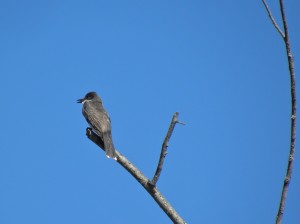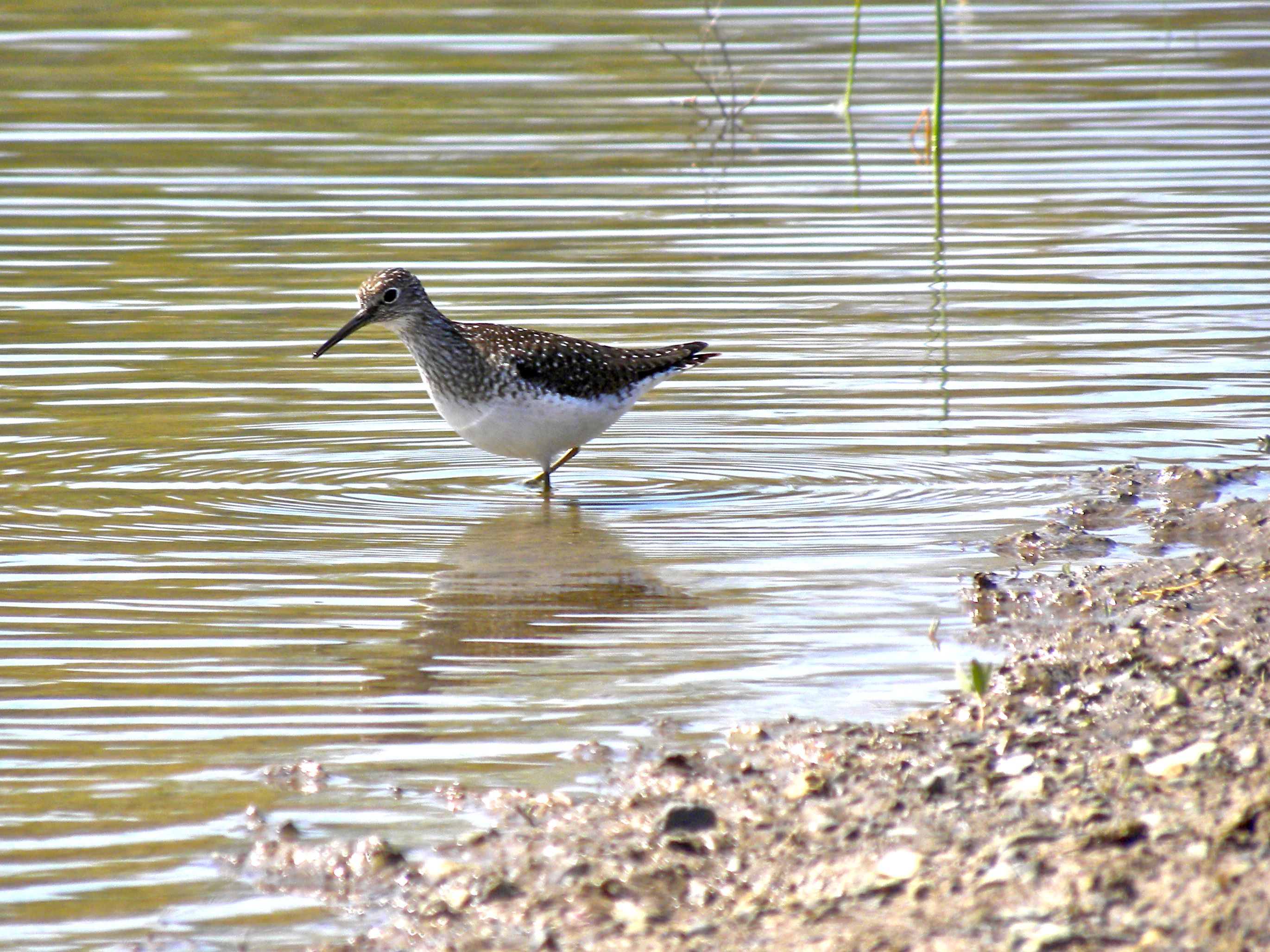
July 25 2012. To say that I went exploring would be to make more of this morning’s rambles than is justified; investigate would be a better choice of verb. So I was investigating a stretch of country trail that I’d never walked before, and it was such an intriguing area that I really didn’t go very far. Apart from time spent struggling to identify expanses of graceful ferns (which all seem to be nearly but not quite identical) I couldn’t resist long stops at series of man-made ponds, which at one time were the quarries for marlstone (a lime-rich mud used as a soil conditioner). When I arrived the ponds were busy with birds but not dragonflies, but by late morning with the sun higher and warmer, it was just the opposite.
It was all very picturesque, ponds rimmed with trees and cattails and reflecting the clear blue sky. A single quiet Hooded Merganser watched me cautiously; in contrast a large group of nervous Mallards wasn’t taking any chances, those that could exploded into flight leaving two week-old youngsters to fend for themselves, which they did handily by scuttling furiously out of sight. I watched an Eastern Kingbird sallying out from a conspicuous perch and catching large deer flies, while a small flock of Cedar Waxwings was swooping around and snapping up other flying insects. Heard but not seen were: Swamp Sparrows, a Common Yellowthroat and American Goldfinches, which by the way, seem to have become increasingly vocal over the past few weeks. Not that they’re particularly assertive in their song, at best a short string of tinkling notes: ‘Tee-dee dee de” or something like that, but this, their breeding season, is timed to coincide with an abundance of food such as thistle and sunflowers, and perhaps that has something to do with it.

My Bird of the Day was an unexpected Solitary Sandpiper found at the far side of one of these ponds, it was slowly working the edge picking at food and teetering whenever it paused in its search. This sort of habitat, a small lake or pond among trees, is just the sort of spot they seek for breeding, although all of that happens well to the north of us, so this one is probably just an early southbound migrant. Solitary Sandpipers are well named, I have never seen more than one at a time, they’re just loners and they seem to be happy that way.